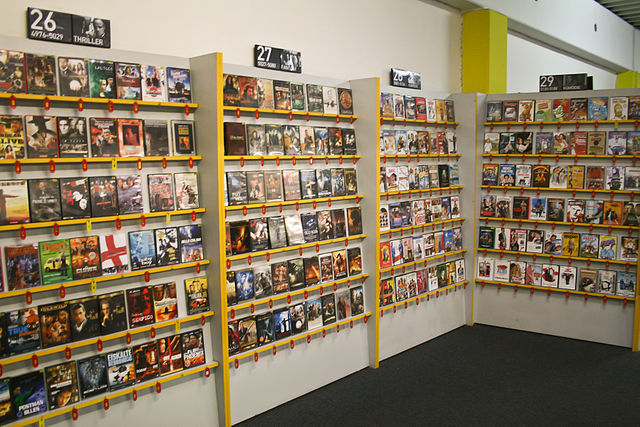Video CD is a home video format and the first format for distributing films on standard 120 mm (4.7 in) optical discs. The format was widely adopted in Southeast Asia, South Asia, Greater China, Central Asia and West Asia, superseding the VHS and Betamax systems in the regions until DVD-Video finally became affordable in the first decade of the 21st century.
"Copy Protected" logo on a VCD package produced in Hong Kong
PlayBack Control (PBC) added in VCD 2.0 requires a special 'Return' button
As of 2011, VCDs and DVDs are the norm for home media in the Philippines; Blu-ray discs are also available but are only displayed at small separate shelves at the counter
Films released on VCD can come on as many as 3 discs, depending on the length of the film; cases of VCDs are shaped like those of audio CDs
Home video is recorded media sold or rented for home viewing. The term originates from the VHS and Betamax era, when the predominant medium was videotapes, but has carried over to optical disc formats such as DVD and Blu-ray. In a different usage, "home video" refers to amateur video recordings, also known as home movies. Another format LaserDisc is also a home video format released in 1978 which never caught on market due to high cost of the players and their inability to record TV programs unlike the VHS. The format gained interests from movie collectors.
Some home video users have a collection of prerecorded media, such as movies, on DVDs. DVDs are only one of a number of ways of viewing home video.
A feature film is viewed on a home screen.
Movie boxes on display at a video rental store
By the mid 2000s, home video purchasers moved away from videotapes, increasingly preferring DVDs. Pictured is a cart of used videotape movies on sale at a used-goods market in 2004.








